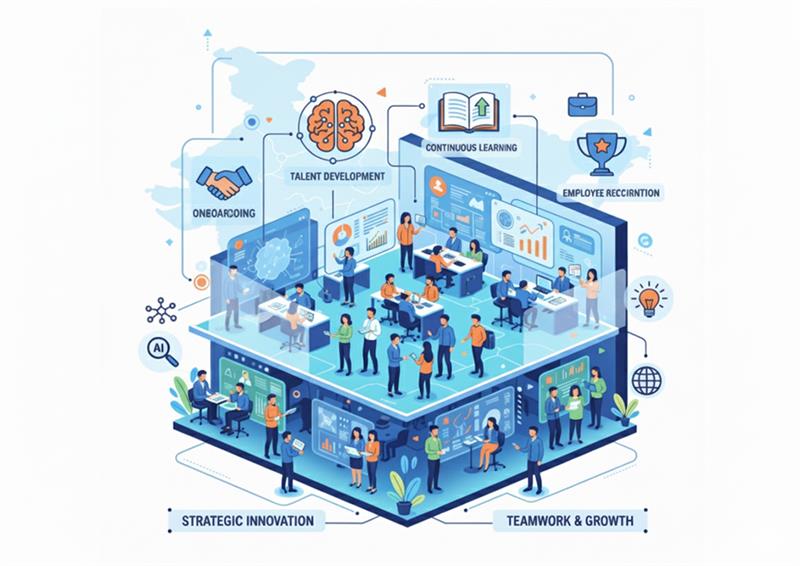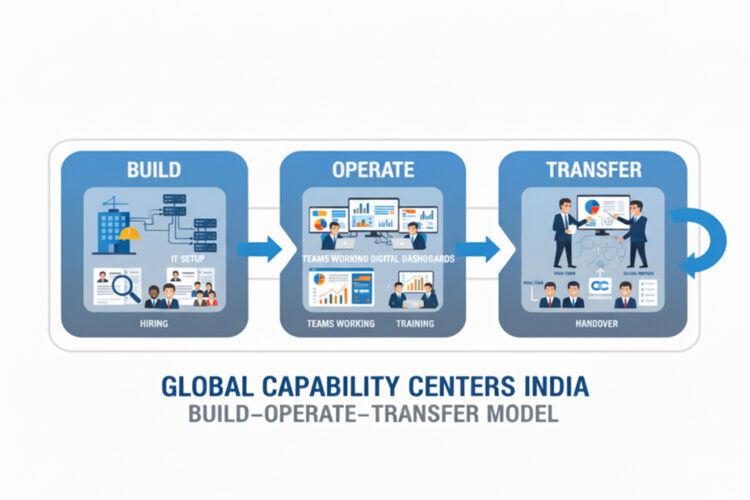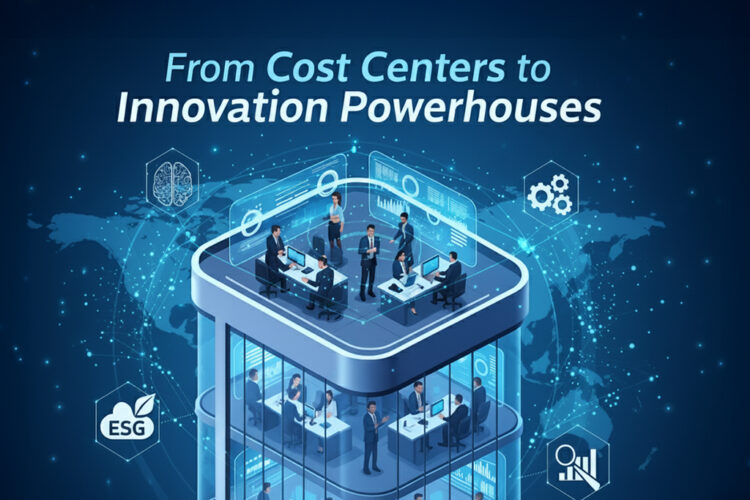
In India’s Global Capability Center (GCC) landscape, infrastructure and cost benefits are just the basics. What truly sets successful GCCs apart is talent. The ability to attract, develop, and retain skilled professionals directly shapes a center’s long-term impact and sustainability.
For multinational companies (MNCs), talent strategy is critical. India’s GCC ecosystem is mature and competitive, with high demand for experts in technology, finance, analytics, and niche domains. Companies that treat their GCC workforce as strategic partners-investing in growth, engagement, and careers consistently outperform those focused only on cost. Weak talent strategies lead to high attrition, knowledge loss, and disrupted operations, while strong teams drive innovation, digital transformation, and long-term competitive advantage.
Talent Landscape: Opportunities and Challenges
- Market Size & Growth: India has 1,600+ GCCs employing ~1.6 million professionals (2025), expected to reach 2 million by 2027. Tier-I cities like Bangalore, Hyderabad, Pune, Chennai lead, while Tier-II cities like Vizag, Coimbatore, Jaipur are emerging expansion hubs.
- Attrition Challenges: Annual attrition is 18–25% rising above 30% in areas like AI, cloud, and data science. Replacement costs can reach 1.5–2x annual salary.
- Salary Trends: Pay is rising, with specialized skills earning 40–50% more than standard positions, narrowing cost advantages versus local tech firms.
- Skill Gaps: Shortages persist in emerging tech, domain expertise (BFSI, healthcare), and leadership roles, necessitating upskilling and knowledge transfer.
- Employee Expectations: Professionals seek meaningful work, growth, exposure to emerging tech, and supportive cultures, making retention a top priority.
Talent Acquisition: Building Your Pipeline
Winning talent requires strategy:
- Employer Brand: Showcase tech stack, career growth, and employee success stories to stand out in competitive hubs.
- Campus Partnerships: Engage IITs, IIMs, and top universities through internships, hackathons, and research projects.
- Strategic Hiring: Focus on high-value roles (architects, data scientists, domain experts) to drive impact and attract top talent.
- Diversity & Inclusion: Flexible schedules, leadership programs, and return-to-work initiatives broaden talent pools and foster innovation.
- Speed & Candidate Experience: Rapid hiring (2–3 weeks) and transparent processes enhance outcomes and employer reputation.
- GCC-as-a-Service Models: Partnering with specialists accelerates hiring via pre-built talent pipelines and early-stage brand credibility.
Retention & Engagement: The Real Advantage
High-performing GCCs retain talent by:
- Meaningful Work: Projects linked to business impact engage employees.
- Career Growth: Clear paths, training, rotations, and leadership programs foster development.
- Compensation & Benefits: Competitive pay, incentives, wellness programs, and equity keep GCCs attractive.
- Culture & Environment: Trust, recognition, collaboration, and work-life balance drive loyalty.
- Manager Quality: Skilled managers coaching and enabling teams reduce attrition.
- Global Integration: Involving GCC employees in strategic planning and cross-border projects strengthens engagement.
Building High-Performing GCC Teams: An Integrated Approach
- Start with Purpose: Define GCC’s strategic value beyond cost savings to guide talent decisions.
- Hire for Potential & Culture Fit: Balance technical excellence with learning agility and alignment to values.
- Invest in Onboarding: Comprehensive programs, mentors, and buddy systems accelerate integration.
- Create Learning Organizations: Embed continuous learning, knowledge sharing, and experimentation.
- Measure & Act on Engagement: Use pulse surveys, stay interviews, and exit interviews to inform action.
- Build Internal Mobility: Cross-team and cross-role opportunities retain versatile talent.
- Celebrate Success: Recognize both team and individual achievements to foster a positive culture.
Inspiredge Approach
Inspiredge helps organizations build high-performing GCC teams via proven recruitment and retention frameworks, access to talent networks, and execution support-especially during early setup phases. The GCC-as-a-Service model accelerates hiring while letting companies focus on strategic role definition.
Conclusion: Talent as Competitive Advantage
As GCCs evolve from cost centers to innovation hubs, talent strategy is the key differentiator. Organizations investing in acquiring, developing, and retaining top professionals position their GCCs for long-term success. The competition for skilled talent will only intensify; those who create strong talent strategies, compelling employee value propositions, and cultures of growth and innovation will thrive.
Author

